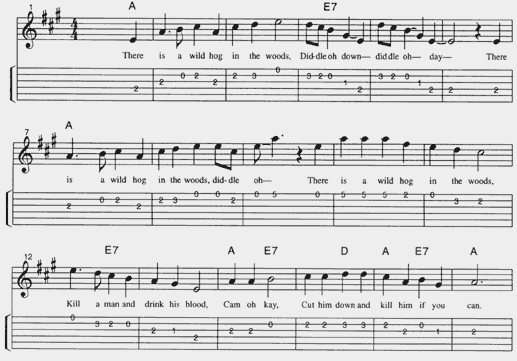
Once upon a time, before the beginning of time, there were three sisters, called the Moerae by the Greeks, or the Weird Sisters ("wyrd" = "fate") by the Scandanavians. To use their Greek names, Clotho spun out the thread of life; Lachesis wove it into a meaningful fabric; and the eldest, Atropos, decided when to cut the thread. Executive decisions like that require a great amount of wisdom, which only comes with age -- but, as you can imagine, she was the scariest of the three, because you never knew when she might make the cut. Pigs who plow the earth were always her closest companions, whether she appeared as Persephone (goddess of the underworld) or Circe the falcon death-bird who turned Odysseus' crew into pigs. Lots of heathen religions relate the sacrifice of pigs to resurrection, as if you could trade a pig to Pluto for a soul. But Atropos doesn't know much beyond her scissors -- she's not really concerned with afterlife. When Christianity drove the pagan religions out of Europe, it was able to incorporate the first two sisters into the image of the Virgin Mary (virgin creatrix and madonna sustainer)*, but wasn't able to deal at all with old lady Atropos, who represented only death. Since a lot of the heathen continued to worship her (perhaps out of fear), she was a threat to the church, and became embodied evil in the form of the Crone or Witch. This song (Child # 18) is related to the time of the Christian conversion of Britain, coincident with the ascendancy of the hero in the ballad and romance traditions (Parsival, for example). The boar story goes like this: a noble hunter in the woods meets a fair lady in a tree, who tells him of a wild boar that has killed a whole bunch of brave soldiers. He wants to know how to find the boar, of course, and all he has to do is to blow his horn. The boar (sometimes named "Bangum") responds, and they fight fiercely. After a significant time, the hero (using a wooden knife in our version -- shades of vampire killling!)** overcomes the wild animal, only to find that it is the familiar of the fair lady, who has now turned into an angry hag. The hero slays the witch -- a precursor of the Salem Witch-Hunts -- and lives happily ever after in his patriarchal paradise. We bet he was surprised when the 1990's arrived with its associated goddess worship revival!
Although there are several American versions that keep all the parts of the above story intact, we're going to protect you from them, and present a condensed version that is popular nowadays. Several modern singers perform this one, but the source version was performed by Eunice McAlexander, Meadows Of Dan, Virginia (recorded by Kip Lornell, 1976). The music given here is in the key she uses (another bow to the ladies!), so if you're male and not a Bluegrass tenor, you might want to pitch it lower.
Note by Bob Waltz: I pitched the guitar tab based on Lyle's transcription (i.e., an octave below the vocal part), but it's worth noting that, in this key, you could play the guitar part an octave lower still and get nice solid bass support.

Complete lyrics:
(unitalicized words repeated every stanza)
There is a wild hog in the woods,
diddle-oh down, diddle-oh day;
There is a wild hog in the woods,
diddle-oh;
There is a wild hog in the woods,
Kills a man and drinks his blood,
Cam o-kay, cut him down,
Kill him if you can.
I wish I could that wild hog see,
I wish I could that wild hog see,
I wish I could that wild hog see,
And see if he'd have a fight with me.
There he comes through yonders marsh,(3)
He splits his way through oak and ash.
Bangum drew his wooden knife, (3)
To rob that wild hog of his life.
They fought four hours of the day,(3)
At length that wild hog stole away.
They followed that wild hog to his den, (3)
And there found the bones of a thousand men.
Footnotes by Bob Waltz:
* Please don't write us because Lyle and Liz equate pagan
spirits with a Christian figure.
While it may be doubted that Christians actually took these ideas from
paganism (belief in the Graeco-Roman gods was effectively dead by the
time Christianity arrived on the scene), it can hardly be denied that
the semi-deified Mary of the Catholic church fills much the same role.
Lyle's comment: Whether or not the actual three sisters were in
the pantheon at the time, the archetypes of Creator, Sustainer, and
Destroyer were, and are, still present (if one believes Jung).
**Or perhaps there was a prophecy involved; if someone said, "Hand of man and blade of steel shall never kill this boar," then the knight could get around the prophecy by using a wooden weapon.
Return to the Remembering the Old Songs page.